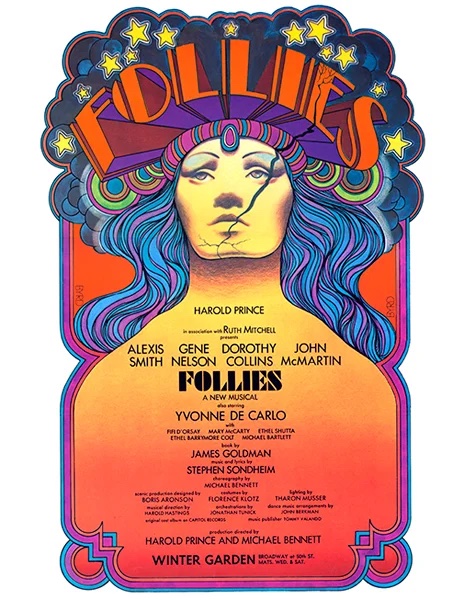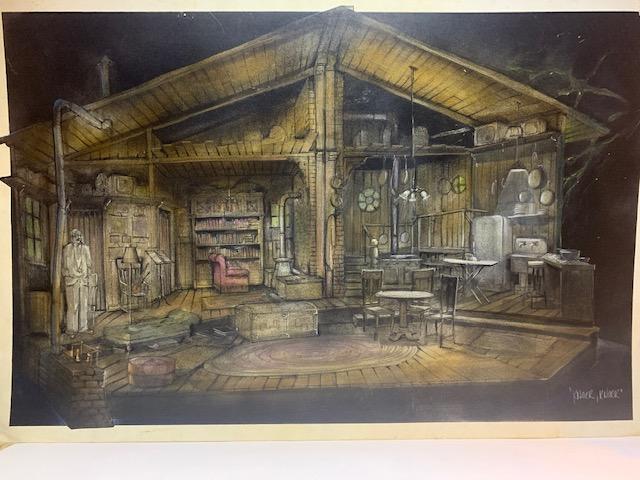By Ron Fassler . . .
In his new memoir, Sondheim & Me: Revealing a Musical Genius, journalist Paul Salsini writes from a unique perspective. Founder and editor of The Sondheim Review, described as “the only publication devoted solely to Sondheim’s work during his lifetime,” Salsini had unique access to the composer-lyricist. Those smart enough to have subscribed beginning with its first issue in 1994 were treated to excellent writing over a period of years on a subject who most theatre aficionados never tire of reading about. Certainly I never do (and I was one of those subscribers).
Upon Sondheim’s death at age ninety-one, going on just about a year ago, Salsini dealt with his sense of loss in a constructive way. Himself an octogenarian, Salsini moved quickly to gather his thoughts and re-read articles that he had published with the goal towards what he described to me in a recent interview as “a read between the lines” of Sondheim’s oeuvre. A look back at how a middle-aged journalist who lived in Milwaukee, Wisconsin managed to engage with the great man and convince him that through reviews and essays, as well as chronicle upcoming productions around the world, a magazine would make a suitable outlet to examine his career. Handsomely produced (the photos were always a highlight), The Sondheim Review managed four issues a year for ten years before Salsini handed over the reins to Rick Pender, who became its manager-editor for another twelve. For most of that time, Sondheim weighed in on what was published, which is the source for much of the writing in Salsini’s memoir. They spoke on the phone, wrote letters and traded faxes, sharing a relationship that was disciplined and professional (like Sondheim himself).

“Initially I wanted to lend a human face to a legend,” Salsini told me. “I think the book reveals Sondheim in more personal and human terms than a lot of biographies or academic works do. And it’s not that we reveal personal kinds of things about him, because that wasn’t the point of the magazine or the book, but it does talk about his personality more than the person. When you read between the lines of how he sees his work being sometimes criticized or evaluated, you see a person who is very much defensive of his work. And who, I think, needs affirmation. I think that’s the underscoring of the theme of the whole book.”
“He reminded me so much of George [the hero of Sunday in the Park with George] how he had to finish the hat, how he had to get everything right, how the world receded around him when he worked and how he was so immersed in whatever project he was doing. I guess that’s what a genius does.”
“Over the years, I began to develop a very large collection of material on Sondheim that practically filled a room in our apartment. And when my wife and I moved to a smaller place, I didn’t know what to do with it. So, I donated it to Marquette University which established the Stephen Sondheim Research Collection, which is open to the public. And that’s what prompted the magazine. At first, I was thinking about writing a book with all I’d collected, but then I realized I did not have the time. I did not have the resources, I could not take time off from work to go to New York and do the proper research, so I decided to put out a magazine. Which was kind of foolhardy and I can’t imagine doing it again.”
“What we tried to do with the magazine was aim it to be journalistic. I didn’t want it to be a ‘fanzine’ at all. On the other hand, I didn’t want it to be some scholarly journal that only a handful of people would read. I wanted it to be accessible and to inform our readers what Sondheim’s work was all about. That’s what drove the whole thing.”
“In terms of creating this book, it was sort of inspired by my writing an article upon Sondheim’s death for the newspaper I used to work for, the Milwaukee Journal, and they gave it a good play. It was all about my “sort of” relationship with Sondheim and the notes that he sent me and so forth. And after I wrote that, I thought, ‘Gee, there’s a book here.’ And I hadn’t looked at The Sondheim Reviews for years, literally, or his notes which were at Marquette, and I got back. So, I went through his notes and the magazines, and I found all these interesting articles and I was really impressed with the quality of the writing by so many good people. And it wasn’t that hard to get it published. And here we are.”
When asked about which of Sondheim’s shows affected him the most, his answer was the one he saw first: Follies.


“I think it has so many layers. People sometimes see it for its spectacle, but I think it has so many human elements to it. How hearts are broken, the infidelities, the bitterness… so many things to ponder. You just have to see it over and over. I think I’ve seen eleven or twelve productions of it (some of them pretty bad), but if you just listen to the score I think it takes on several different meanings each time you see it.”
“I think about the variety of Sondheim’s work (which is so great) and if he were around today I might ask him what the one theme is that runs through all the shows like Company and Sweeney Todd and Merrily and Pacific Overtures. Is there such a thing as a theme or intent on all of them? Because I can’t see it.”
As someone who has read a great deal of what’s been written about Sondheim, I found Sondheim & Me to be an engrossing and quick read. There are wonderful quotes that were new to me which, for obvious reasons, are what I pray for when opening a Sondheim book.
Here’s to answered prayers.
Sondheim & Me: Revealing a Musical Genius, by Paul Salsini
221 pages, plus 64 (unnumbered) pages of illustrations
Bancroft Press
Publication Date: October 18, 2022
ISBN: 978-1610885928
Available in Hardcover, Kindle Edition and Audible Audiobook






















